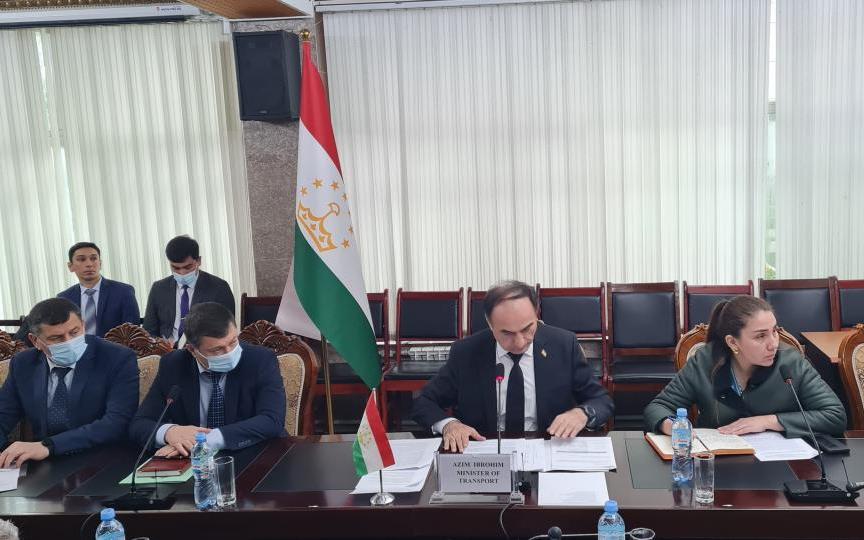A joint working group of Tajikistan and China on reopening the Kulma border crossing point (BCP) along Tajikistan’s common border with China has held a meeting through video conferencing.
Co-chaired by Tajik Minister of Transport Azim Ibrohim and First Deputy Head of China’s Xinjiang Uyghur Autonomous Region (XUAR) Zhang Chunxian, the meeting was focused on issues related to taking joint measures to reopen the Kulma BCP as soon as possible, according to the press center of the Ministry of Transport (MoT).
The Tajik delegation, in particular, asked the Chinese side to reduce the cost of loading and unloading goods at the BCP, speed up the return time of empty containers and so forth.
The Kulma BCP, which is the only border crossing point along Tajikistan’s common border with China, has been closed for traffic since October last year. The Kulma BCP has reportedly been closed at the initiative of the Chinese authorities due to the coronavirus crisis.
Tajik entrepreneurs, however, associate the closure of the border with the Chinese authorities’ politics aimed at protection of interests of Chinese entrepreneurs.
“They lure into their markets with favorable conditions, but when trade is already established, they start to gradually change the rules in favor of their citizens,” one of them told Asia-Plus in an interview.
Therefore, many entrepreneurs engaged in delivering goods from China to Tajikistan are suffering losses
The Kulma border-crossing checkpoint is the only overland border crossing along the 450-kilometer boundary between Tajikistan’s Gorno-Badakhshan Autonomous Region (GBAO) and China’s XUAR.
Opened in 2004, the Tajik-China trade route runs from Khorog, the capital of Gorno Badakhshan in southeastern Tajikistan, over a high-altitude plateau and then down into China, where it ends in the city of Kashgar, 700 kilometers away.
As conditions are so tough at the Kulma border crossing, which is located on a mountain pass 4,400 meters high, until May 1 2008, the gateway had stayed open only 15 days out of every month, while from November through April it had been closed altogether.
From 2008 to 2012, the Kulma crossing operated every day, except weekends, from May through November.
Tajikistan and China reached an agreement on a year-round operation of the Kulma border-crossing checkpoint on December 29, 2011 but it became possible only in 2012, when all necessary conditions were created to ensure the year-round operation of the Kulma border crossing.
The Kulma Pass is a mountain pass across the Pamir Mountains on the border between the Gorno-Badakhshan Autonomous Region of Tajikistan and the Xinjiang Autonomous Region of China. Asian Highway AH66 runs through the pass.
The pass opens from the north to the southeast, and is 500 m wide from north to south and 1 km in length from east to west with a gentle incline not exceeding 20 degrees. On the Tajik side, the pass is 80 km by road to Murgab. On the Chinese side, the pass is 13.9 km from Karasu, a port of entry on the Karakorum Highway which leads to Tashkurgan (60–70 km) and Kashgar (220 km).
Over the past decade, China has been one of major trading partners of Tajikistan. China is Tajikistan's largest source of investment and the third largest trading partner of Tajikistan following Russia and Kazakhstan.
Over the past decade, China's direct investment in Tajikistan has totaled about 1 billion U.S. dollars.
It is to be noted that before the coronavirus pandemic, China was the world’s largest exporter by value, exporting US$2.499 trillion worth of goods around the globe in 2019. That dollar amount reflects a 9.9% gain since 2015 and a modest 0.2% increase from 2018 to 2019.






